Family : Cytinaceae

Text © Prof. Pietro Pavone

English translation by Mario Beltramini
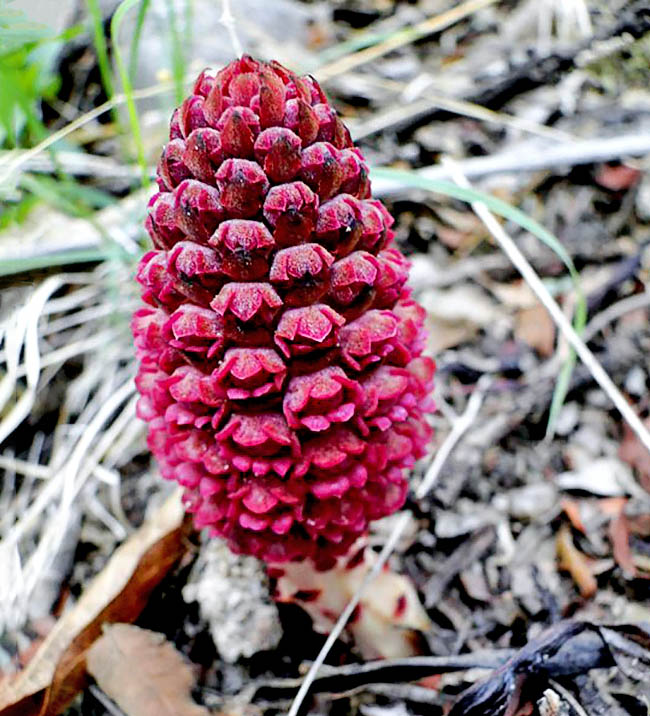
Endemic to central and south-west Mexico, Bdallophytum andrieuxii has no green leaves for doing photosynthesis and lives as obliged parasite clinging to the roots of various species belonging to the genera Bursera and Juniperus © Eugenio Padilla
Bdallophytum andrieuxii Eichler is a parasitic plant who does not have the capacity of photosynthesis (holoparasite), belonging as in Europe Cytinus ruber, to the family Cytinaceae A.Rich, of the order Malvales.
In the past the family was included into the order Rafflesiales but molecular studies have indicated its nesting inside the order Malvales (APG III, 2009).
Bdallophytum andrieuxii, species endemic to central and south-western Mexico, is found in the states of Guerrero, Michoacán de Ocampo, Morelos, Puebla and Oaxaca.
It grows in the tropical deciduous forests and in the xeric bush at altitudes between 650 and 1750 metres.
It was described, in 1872, by August Wilhelm Eichler (1839-1887) in the Berlin illustrated magazine Botanische Zeitung (Bot. Zeitung, Berlin) 30: 75; 1872).
Eichler was a German botanist, Lecturer 1865 at the University of München and in 1871 Professor at the Technische Hochschule of Graz (Austria), from 1872 to 1878, at the University of Kiel (Germany) where he remained until 1878, when he became Director at the herbarium at the university of Berlin.
In addition to having described a high number of spermatophytes he has developed a system of classification of the plants based on phylogenetic directions, in the light of the evolutionary ideas.
This system of classification of the plants he developed in 1886 was accepted and expanded by Adolf Engler (1844-1930) in the system of natural classification of the plants “Die Natürlichen Pflanzenfamilien” (The natural plant families), obtaining worldwide acceptance.
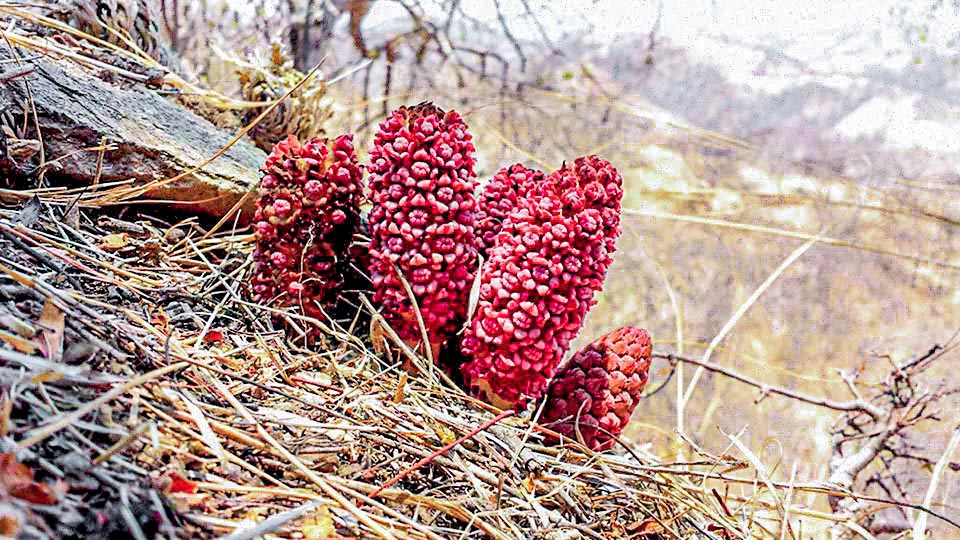
Gets noticeable only starting from May when its showy dimorphic inflorescences, fed by a dense ramification in the tissues of the host, get out from underground © Iván Bravo Ramírez
The name of the genus Bdallophytum comes from the ancient Greek “βδάλλω” (to suck) and “ϕυτόν” (phyton) plant, because it includes plants living at the expense of others.
The specific epithet andrieuxii is honoured to G. Andrieux, merchant of French origin, great explorer and collector of plants in southern Mexico.
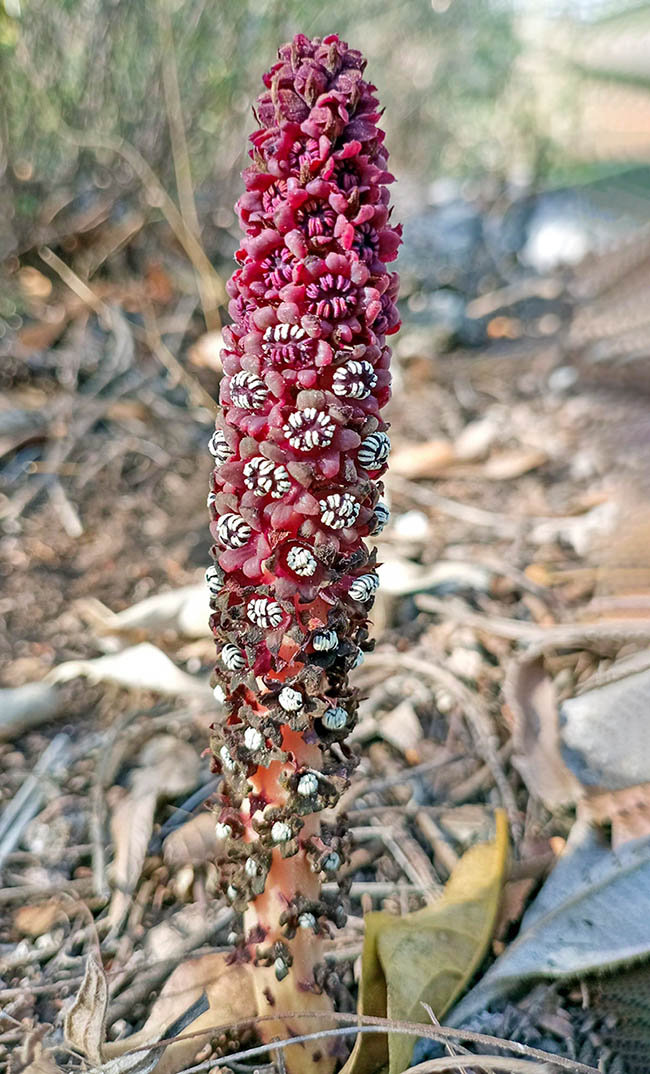
Inflorescences have even more than 40 flowers. The male are noted immediately because are longer and thinner © Cristian Morales Cruz
Professor Mario Sousa Sánchez (1940-2017), Mexican botanist, in one of his writings refers that of this collector no news are available apart those coming from the herbaria he has written and that were sold to various botanical institutions.
His first series is presently available in the Paris Museum, which in turn has received it from the Herbarium B. Delessert of Paris.
Other specimens were sold in Geneva to the illustrious botanist Augustin Pyrame de Candolle (1778-1841) and more ones were purchased by the botanist William Jackson Hooker (1785-1865) who, after his appointment as director of the Royal Botanic gardens of Kew, in 1841, gave them as a gift to the Kew Herbarium.
Other specimens, in smaller number, exist in other Institutions like: Komarov Botanical INstitute of the Russian Academy of sciences, Russia; University of Oxford, England; Muséum National d’Histoire Naturelle, France, Naturhistorisches Museum, Wien, Austria.
The value of the whole G. Andrieux whole collection stands not in the number of specimens collected, but for the locations and for the time (1834) when it was realized and also because the specimens were studied by illustrious botanists of that time.
Common names. In Mexico, in the state of Guerrero and of Michoacán the plant is called “flor de tierra”; in the state of Morelos “mojón de gañán”.
The vegetative parts of Bdallophytum andrieuxii are filamentous, similar to fungal hyphae,and grow inside the roots of species of the genus Bursera, like Bursera linanoe (La Llave) Rzed., Calderón & Medina, small tree, 5 to 7 m tall, with woody and succulent stems, thanks to which it may store water to survive during the long dry season.
Bdallophytum andrieuxii is also a parasite of some species of juniper (Juniperus).
Bdallophytum andrieuxii is a herbaceous species, holoparasite, dioecious, 10-12 (25) cm tall, with succulent stem and 1,6-4,5 (-4,8) x 1,4-3,8 mm scaly stem, brown to violet, glandular, ovate to lanceolate in shape, with irregularly serrated or entire margin.
It is visible starting from the month of May and ends with fruiting until November. The inflorescences have a high number of flowers ( up to 40 or more) and appear dimorphic: the male are longer and thinner than the female ones.
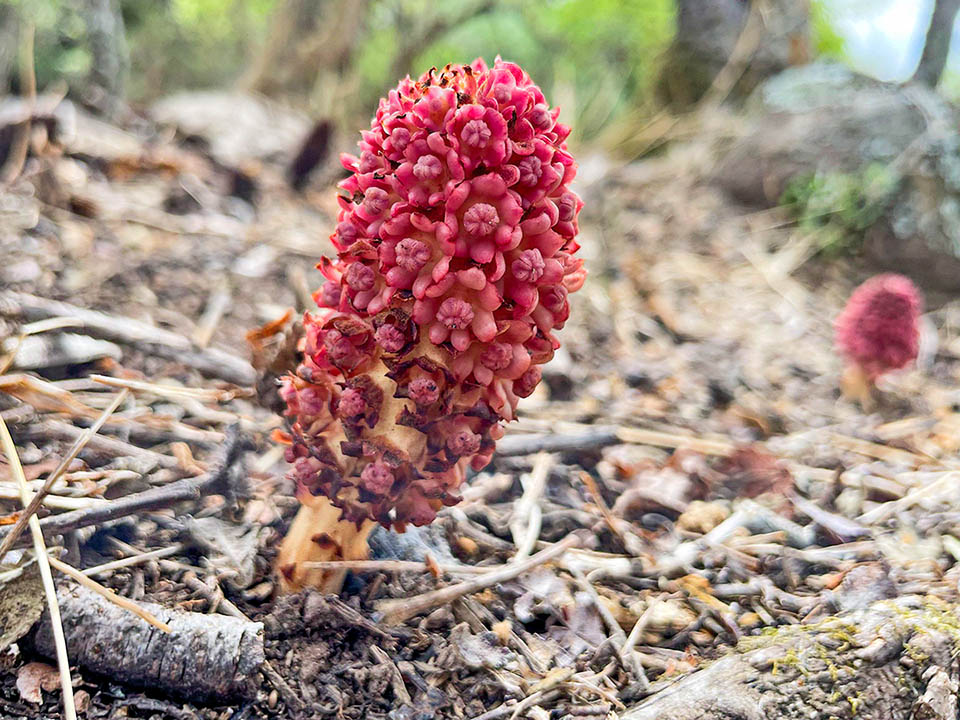
Female inflorescence. In both sexes the flowers have a smell of rotten fruit. They attract ants, carrion flies and butterflies © Alejandro Flores-Palacios
The flowers have connate tepals at the base with uniseriate glandular hairs on the dorsal side. In the male flowers tha bracta measure (2,1-) 4,2-6,6 x 1,3-3,8 (5,6) mm and are ovate to spatulate with serrated margin.
The perigonium has 5-7 segments, is 2,9-3,8 mm tall, with 3,2-3,5 mm base, reddish to dark violet and with 1-3 mm long staminal column.
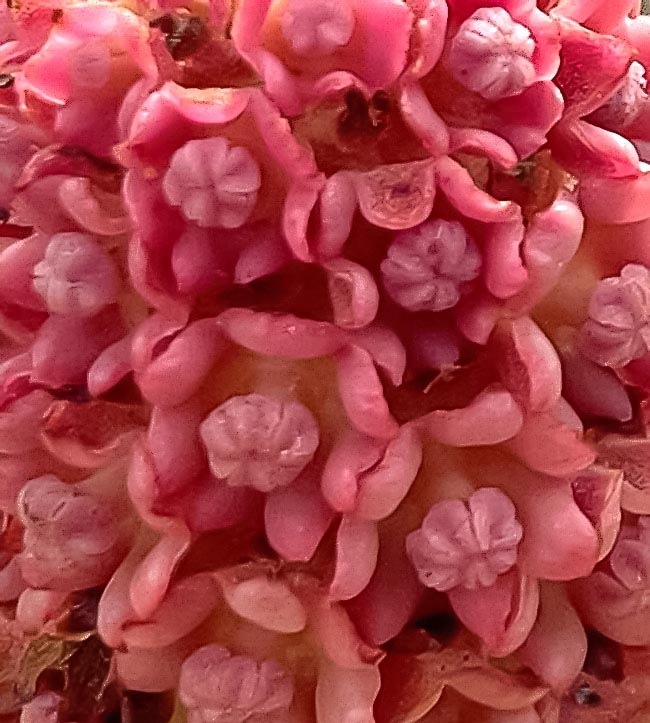
Female flowers have 5-7 segments perigones., red to dark violet, 0,9-1,5 mm long styles and 8-12 lobed stigmas © Alejandro Flores-Palacios
The 5-14 (-18) anthers are 1-2 mm long, normally curved, arranged irregularly at the apex of the staminal column, and with inconspicuous connective appendages, very reduced if compared with those of Bdallophytum americanum.
The female flowers have 3,3-5,5 x 1,8-4 mm bracts, with serrated margin, with a 5to 7 segments perigonium, 3-4,3 mm tall and 3 to 6 mm broad, red to dark violet, with 0,9-1,5 mm long styles and 8 to 12 lobate stigmas, oblong, usually yellow.
The male and female flowers give off the smell of rotten fruit.
The fruits are berries that grow together, of brown colour, measuring 0,8 to 1,2 cm long and containing 0,3-0,4 mm long seeds.
A field study (Brazilian Journal of Botany 45 3 1047-1055; 2022) has highlighted that the flowers produce nectar only in the warmest hours of the day and in quantities and concentration similar between the female and male inflorescences.
Moreover, their reproductive parts have a temperature higher than that of the surrounding air (thermogenesis).
The pollinators may be: ants, carrion flies, butterflies.
The visits are greater when the nectar concentration is maximum.
Particularly, the butterflies, who represent the most common visitors, utilize the male and female inflorescences for feeding and in the meantime they touch the reproductive organs of the flowers. Furthermore, during their visits, they lay their eggs on the tissues of the flowers. In fact, have been found larvae of lepidopterans of the genus Cissia in all the infruitescences that have been analyzed.
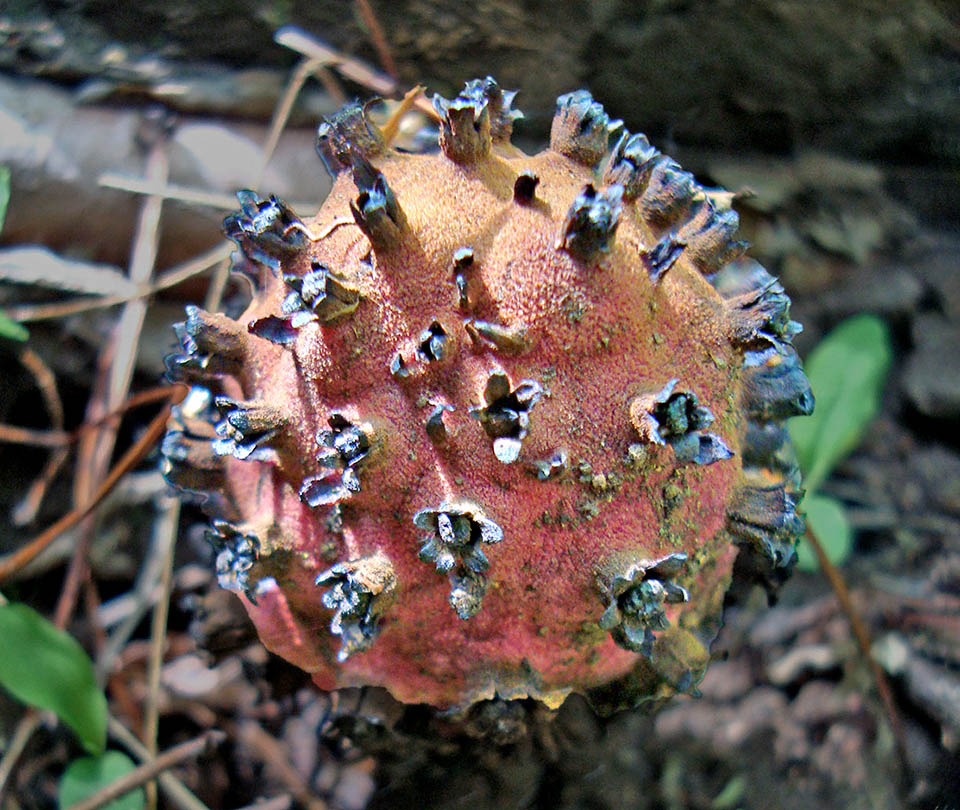
After fecundation ovaries get larger. The grown together fruits. contain several seeds © Par Ana Nuño
However, it has been seen that despite the larvae developing at the same time of the fruits and the seeds, that has not influenced the seeds germination.
In the popular medicine this plant in the past was utilized against leprosy, sores, cancer and pimples.
Synonyms: Cytinus andrieuxii (Eichler) Hemsl. (1882); Hypocistis andrieuxii (Eichler) Kuntze (1891); Scytanthus andrieuxii (Eichler) Solms (1901).
